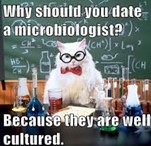First we had Probiotics & then Prebiotics. So What are Postbiotics?
Posted by Phil Heler on December 16, 2022First came probiotics with the introduction of seemingly beneficial bacteria in the form of supplements. Then there were prebiotics, or the foods these bacteria need to thrive. Now, there is another candidate called postbiotics.
My weekly blogs since April, just like the ‘One Love’ armband during the World Cup in Qatar, have been conspicuous by their absence.
There are many facts and figures from 2022 that are astonishing. The war in Ukraine has been waged for a total 287 days so far (at the time of writing). Domestically the extent of the turmoil in the government has meant that 147 government members have resigned or been sacked.
Meanwhile we have also reached another strange milestone in the UK. Since 1972 the number of men and women getting married has reduced by 50%. There are now only 18 marriages per 1,000 people which is the lowest figure since 1862.
Meanwhile in absolute contrast to this in Indonesia a new criminal code prohibits the cohabitation of unmarried couples. There are of course obvious cultural differences as Indonesia is the largest Muslim majority nation and recently it has seen an increase in religious conservatism.
The ‘One Love’ armband is designed to promote inclusion and diversity, but just like Qatar, human rights advocates are equally concerned with the stifling of personal freedoms in Indonesia.
At least during the World Cup, it can be said that Stephanie Frappart of France became the first woman to officiate a World Cup match, between Costa Rica and Germany. There is also another important scientific landmark for the ladies as NASA recently appointed its first female launch director.
Ms. Charlie Blackwell-Thompson was responsible for the launching of the Artemis 1 rocket from Launch Pad 39B at the Kennedy Space Centre in Florida on November 16th 06:47:44 GMT (Greenwich Mean Time). Precision is everything in space travel!!!
Sadly, many great female scientists were never recognised in their day when inclusion and diversity were both cultural aliens. Many of the ladies were invisible, their endeavours remaining uncelebrated in the history books. A prime example is Ester Lederberg, born almost exactly 100 years ago on December 18th 1922, who was one of the greatest microbiologists of her time. She pioneered information that laid down the groundwork for significant discoveries in microbiology and immunology. She worked with her husband Joshua Lederberg. Yet when Joshua was awarded the Nobel Prize for Physiology and Medicine in 1958 with George Beadle and Edward Tatum, Ester’s invaluable contribution was never acknowledged in his acceptance speech.
Ester Lederberg would have been astonished by progress made in microbiology in the last 20 years (she died in 2002). One of the current hot topics in science and microbiology is the gut biome. In 2020 there was an explosion in publications in microbiome research with over 20,000 articles published. From a business perspective the global probiotics market was valued at $58.17 billion in 2021 and is expected to expand at an annual growth rate of 7.5% for the next eight years. One of the spin-offs from the COVID-19 pandemic was a major spike in demand for immunity-boosting food products and supplements. Probiotic supplements were an obvious choice.
We each contain 100 trillion little hitchhikers inside us. Many of these microorganisms live quite happily in our gut (or colon). Our relationship with them is mutually beneficial. In exchange for board and lodgings they boost our immune system, have a shielding effect from dangerous bacteria and help us digest and ferment our food. They influence our energy levels, how we respond to hormones and make us feel satiated or hungry.
In the last two years I have written about new studies which demonstrate how the gut biome plays a significant role in our health as we age. Probiotic supplements can even be designed to alter the profile of our gut flora with the aim of modifying our mood and outlook. This has led to the evolution of a new term called ‘psychobiotics’ .
As evidence continues to be amassed regarding the importance of our microbiome, so too has the desire to maximise its beneficial effects. First came probiotics with the introduction of seemingly beneficial bacteria in the form of supplements.
Then there were prebiotics, or the foods these bacteria need to thrive. Now, there is another one called postbiotics. The actual term ‘biotic’ derives from the Greek word ‘biōtikós’, which means ‘pertaining to life’. It is used in reference to a biological ecosystem made up of living organisms together with their physical environment.
The newest member of the biotics family, ‘postbiotics’, refers to the bioactive compounds produced by food-grade microorganisms during the fermentation process of what we eat. Postbiotics also include actual dead gut bacteria along with all their breakdown products (there is a high cell turnover in your gut).
Breakdown products include enzymes, vitamins, polysaccharides, and short-chain fatty acids. In simple terms if our gut microbiome is our body’s natural pharmacy, postbiotics are the medicines it dispenses.
The effect of dead bacteria, as counter-intuitive as it may sound, cannot be underestimated. They do not have to be alive to be beneficial. A bacteria called Akkermansia muciniphila which lives on our gut lining is a valuable case in point. This bacterium appears in far greater prevalence in slim healthy young people than it does in obese people or those that suffer with Type 2 diabetes.
Remarkably research has demonstrated that Akkermansia muciniphila can offer a degree of protection against becoming obese. This was the conclusion of a study published in 2019 in ‘Natural Medicine’ by Patrice Cani and his colleagues at the Catholic University of Louvain in Belgium.
They undertook a clinical trial involving 32 overweight or obese volunteers. Their results demonstrated that irrespective of whether Akkermansia muciniphila bacteria were dead or alive, their presence improved insulin sensitivity.
This decreased the risk of Type 2 diabetes, reduced blood cholesterol and body weight when compared with people who took a placebo. The study also identified a specific protein on the cellular surface of Akkermansia muciniphila that stimulated this effect. If you are interested, you can even buy or check out this bacterium as a health product at www.theakkermansiacompany.com.
Apart from dead bacteria, there is a wide array of bioactive compounds that bacteria manufacture, as I mentioned earlier, that fall under the umbrella term ‘postbiotic’. One of the most interesting compounds are short chain fatty acids (SCFA) which are breakdown products from indigestible fibre from foodstuffs such as inulin found in chicory, leeks, asparagus or bananas. As it turns out one particular SCFA could be very useful indeed. This is butyrate.
Butyrate ameliorates gut lining inflammation and helps reduce oxidative stress. It modulates our gut motility ensuring our food passes through the digestive tract at the right speed. In addition to all these benefits , a growing number of studies have stressed the role of butyrate in the prevention and inhibition of colorectal cancer. This makes sense as a diet rich in fibre (which generates butyrate) has long been associated with a lower incidence rate of this type of cancer.
New research also suggests butyrate interacts with immune cells in our gut. It appears it helps to maintain our immune system’s balance between tolerating the good bacteria while reacting to any bad bacteria. Studies also indicate that butyrate can be a useful supplementary therapy for ulcerative colitis and also be a useful tool in food allergies.
Another exciting compound is ‘Urolithin A’ (UA). UA is produced when our gut bacteria are exposed to polyphenolic compounds found in our food. Polyphenols are a category of plant compounds that offers various health benefits and are rich in some fruits such as various berries, pomegranates, and nuts including pecans and walnuts.
UA helps maintain our mitochondria, which are essential in powering our cells. Mitochondrial activity decreases with age and mitochondrial dysfunction also contributes to osteoarthritis (OA).
A study published this year in August in the happily named festive journal ‘Ageing Cell’ showed that UA supplementation increased mitochondrial activity in cartilage of OA patients. Furthermore, Urolithin A was also shown to reduce disease progression, decreasing cartilage degeneration, synovial inflammation, and pain.
The study commented that ‘UA promotes joint mitochondrial health, alleviates OA pathology, and supports Urolithin A’s potential to improve mobility with beneficial effects on structural damage in joints.’ These findings led to the launch of Mitopure, although not cheap, which is the first UA supplement.
There is intense growing interest in postbiotic research because postbiotics cut out the need for the middle man (or the live bacteria themselves). Since postbiotics do not contain live bacteria, there is a much lower risk of complications. The fundamental issue with probiotics is they must survive passage through our digestive tracts and still be viable at the end of it. Live bacteria are harder to store and transport (humidity and temperature). Postbiotics on the other hand have a much longer shelf live, without storage drawbacks and are more reliable to manufacture. So watch this space!!!





